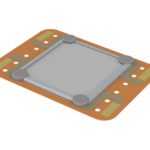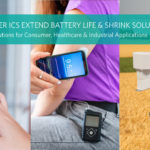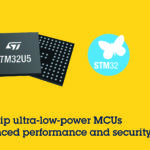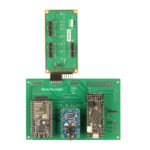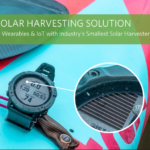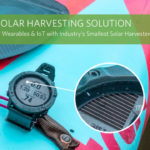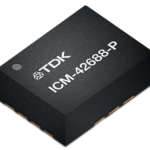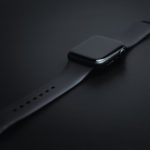While piezoelectric haptic solutions are found in many applications, they are often large and heavy, thus shaking the entire device. KEMET’s new piezoelectric polymer film haptic actuators are thin (150 µm), flexible and conformable devices made from a proprietary, patent-protected paper-thin material, an electro-active polymer film, that enables piezoelectric effects to mimic the sense of […]
Wearables
Boost converter, LDO ICs feature supe-low quiescent currents
Designers can now extend battery life and reduce the solution size of consumer, industrial, healthcare, and IoT systems with three new Essential Analog ICs from Maxim Integrated Products, Inc. The MAX17227A 2A nano power boost converter, the MAX17291 high voltage, 1A boost converter, and the MAX38911 500mA LDO all provide the lowest quiescent current among competitive solutions to […]
LCD contrast vs temperature
by Bill Cheung, Orient Display The LCD has been widely used in different applications, such as automotive, home appliance, medical, industrial, communication, entertainment, consumer devices, etc. It has been the most popular display technology for more than a decade after surpassing CRT. But the LCD has its genetic drawbacks, such as narrow viewing angle, slow […]
Super-low-power arm cortex-M33 core MCUs feature advanced cybersecurity, graphics, peripherals
STMicroelectronics has announced a new generation of extreme power-saving microcontrollers (MCUs), the STM32U5* series, to meet the most demanding power/performance requirements for smart applications including wearables, personal medical devices, home automation, and industrial sensors. The industry-leading STM32 MCUs, built upon the highly energy-efficient Arm Cortex-M processors, are already in billions of domestic appliances, industrial controls, […]
Smart hearable reference design speeds development of voice-initiated, hands-free Alexa built-in devices
QuickLogic Corporation announced it has released an Amazon-qualified reference design that empowers OEMs and ODMs to evaluate and develop their own smart hearable products quickly and easily. This kit integrates the Alexa voice-initiated Close-Talk experience, enabling a broad set of battery-powered applications to communicate directly with Alexa for a multitude of use cases. This is […]
MPPT chip boosts efficiency of space-constrained solar harvesters
Designers of space-constrained designs can now significantly increase runtime with the MAX20361 single-/multi-cell solar harvester with maximum power point tracking (MPPT) from Maxim Integrated Products, Inc. The industry’s smallest solar harvesting solution is ideal for space-constrained applications such as wearables and emerging internet of things (IoT) applications. Designers are often challenged with the tradeoff between […]
Single-/multi-cell solar harvester increases runtime in wearable and IoT applications
Designers of space-constrained designs can now significantly increase runtime with the MAX20361 single-/multi-cell solar harvester with maximum power point tracking (MPPT) from Maxim Integrated Products, Inc. . The industry’s smallest solar harvesting solution is ideal for space-constrained applications such as wearables and the emerging internet of things (IoT) applications. Designers are often challenged with the […]
MEMS motion sensor/software combo targets smart TV, robotics, AR/VR, wearables, IoT apps
TDK Corporation announces the availability of the InvenSense ICM-40627 and ICM-42688-V high-performance MEMS motion tracking solutions (6-axis IMU + dedicated software library). As a leader in consumer IoT, TDK continues to provide a complete suite of SmartMotion sensor solutions for a broad range of consumer and IoT applications. In addition, a comprehensive development platform, the […]
LTE Cat 1 chip platform handles VoLTE/100 kbps IoT apps
Sequans Communications S.A. announced that its second-generation LTE Cat 1 chip platform, Calliope 2, will soon be sampling. Calliope 2 is designed for the cost-effective support of IoT applications that require VoLTE and a data rate higher than 100 kilobits per second that cannot be supported by LTE-M or NB-IoT technologies. Typical Calliope 2 applications […]
Power system design considerations for wireless IoT nodes and wearables – Virtual Roundtable (part 2)
The second part of EEWorld’s two-part “virtual roundtable” discussion on power system design considerations for wireless IoT nodes and wearables focuses on the use of switching regulators and the associated technical challenges. Our panelists are: Florian Feckl (FF), Systems Engineer and Product Definer for Low Power Buck Converter, Texas Instruments, and Kyle Van Renterghem, (KVR) […]

